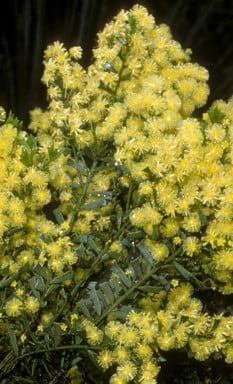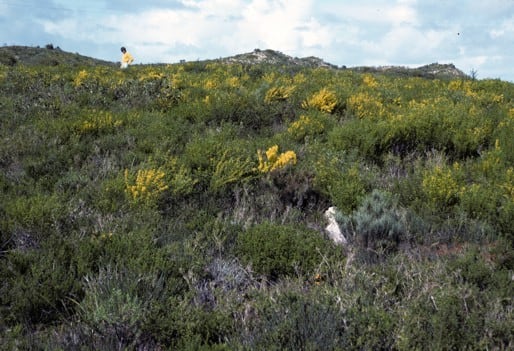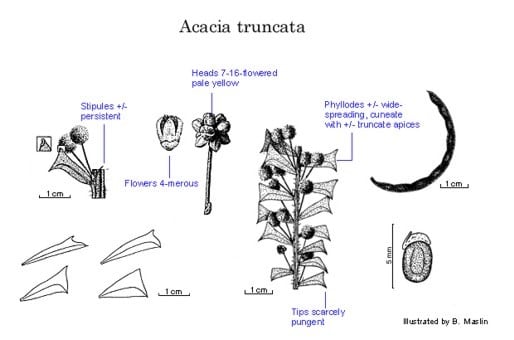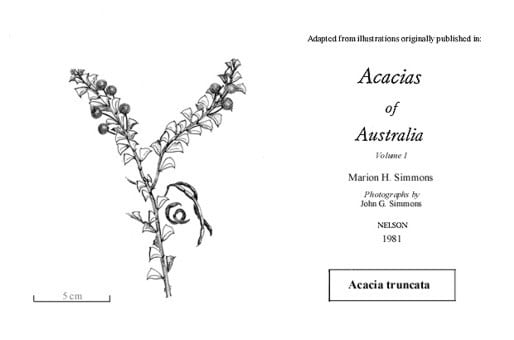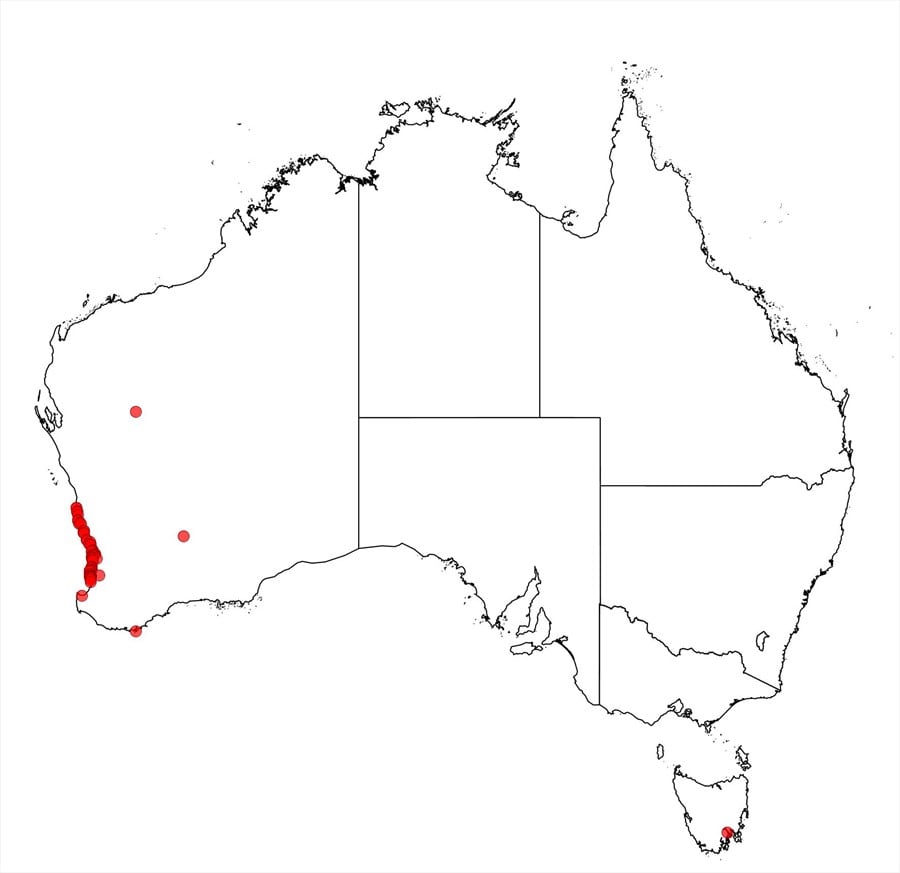Acacia truncata (Burm.f.) Hort. ex Hoffmanns.
WATTLE
Acacias of Australia
Family
Fabaceae
Distribution
Coastal areas from Leeman S to Myalup, south-western W.A.
Description
Shrub usually dense and 0.5–2.3 m high. Branchlets ribbed, glabrous to shortly pilose. Stipules usually persistent. Phyllodes often ±patent, cuneate to obtriangular with a prominent gland-bearing angle on adaxial margin above the middle, ±obliquely truncate, usually 9–25 mm long and 5–13 mm wide with l:w = 1.5–2.5, scarcely pungent, glabrous; midrib ±central. Inflorescences extremely reduced 1 (2)-headed racemes; raceme axes 0.5–1 mm long; peduncles (5–) 10–18 mm long, to 25 mm long in fruit, rather slender, glabrous; heads globular, 7–16-flowered, pale yellow. Flowers 4-merous; sepals united to near apex, with lobes broadly triangular. Pods linear, curved, to 6.5 cm long, 2–4 mm wide, crustaceous, blackish, normally ±glabrous; margins thick, yellowish. Seeds longitudinal, oblong to elliptic, 3–3.5 mm long, shiny, brown; aril ±clavate.
Phenology
Flowers June–Sept.
Habitat
Usually grows in shallow sand over limestone in coastal heath.
Specimens
W.A.: Swan R., J.Drummond 297 (BM, G, K, MEL, P, PERTH, W); Leeman, B.R.Maslin 4279 (PERTH); near Fremantle, L.Preiss 957 (FI, G, GOET, HBG, K, L, MEL, P, PERTH, STR, W)
Notes
Two variants, both with caducous stipules, occur between Fremantle and Bunbury. One grows in deep sand on coastal foredunes between Fremantle and Myalup Beach and is characterised by rather large phyllodes, to 4 cm long and 1–1.5 cm wide (e.g. L.Preiss 956, syntype of A. cuneata var. glabra). The other occurs in shallow sand over limestone in Tuart (Eucalyptus gomphocephala) forest near Lakes Clifton and Preston. It grows to 3m high, commonly with an open habit, and has phyllodes longer and narrower than normal, i.e. l:w = 3.5–5 (e.g. 37.5 km S of Mandurah, M.D.Tindale 3917, PERTH).
Possibly one of the first two plants ever collected by Europeans in Australia, fide A.S.George, W. Austral. Naturalist 11: 173 (1971).
Acacia truncata and A. littorea should perhaps be treated as subspecies of the one species. However, A. littorea has caducous stipules and commonly shorter, ascending, pungent phyllodes. It occurs mainly S of Bunbury and flowers from Aug. to Nov. and A. truncata occurs N of Bunbury and flowers from June to Sept. See B.R.Maslin, Nuytsia 2: 311–321 (1978) for further details and for discussion of the nomenclature of these two taxa.
FOA Reference
Data derived from Flora of Australia Volumes 11A (2001), 11B (2001) and 12 (1998), products of ABRS, ©Commonwealth of Australia
Author
B.R.Maslin
Minor edits by J.Rogers
This identification key and fact sheets are available as a mobile application:
URL: https://apps.lucidcentral.org/wattle/
© Copyright 2018. All rights reserved.
